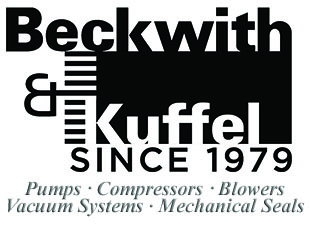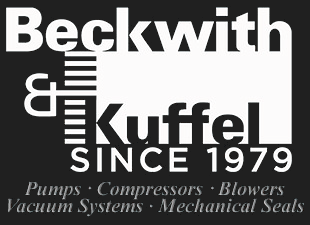Paper Stock, Discussion
Centrifugal pumps are used with complete success in handling paper stock and other fibrous suspensions. However, the nature of a stock suspension requires certain special considerations. All of the factors affecting pump operation discussed below must be carefully considered for a good installation.
SUCTION PIPING
The stock must be delivered freely to the impeller for the pump to operate. The suction pipe should be as short and direct as possible. The suction pipe and entrance from the stock chest should never be smaller than the pump suction connection, and should be level with no air pockets. Always keep the direction of flow in a straight line.
Inadequate suction design with undersize pipe and excessive fittings can prevent the pump from delivering rated capacity, or from operating at all on high consistency stocks.
SUCTION HEAD
Stock pumps will not operate when a vacuum is required to maintain flow into the pump. Thus, there must be a static suction head sufficient to overcome suction line friction losses.
PERCENT CONSISTENCY
The consistency of a pulp and water suspension is the percent by weight of pulp in the mixture. Oven Dry (O.D.) consistency is the amount of pulp left in a sample after drying in an oven at 212?F. Air Dry (A.D.) consistency is an arbitrary convention used by paper-makers, and is the amount of pulp left in a sample after drying in atmosphere. Air Dry stock contains 10% more moisture than Bone Dry stock, i.e. 6% O.D. is 6.67% A.D.
Traditional paper stock pumps will handle stock up to approximately 6% O.D. consistency. The absolute maximum limit is a function of many factors including stock fiber length, pulping process, degree of refining, available suction head, etc. In certain situations, consistencies as high as 8% O.D. can be successfully handled with a standard paper stock pump.
Special considerations required by stock suspension
Recent testing on various types of stock has indicated that pump performance is the same as on water for stock consistencies up to 6% O.D. In other words, water curves can be used to select stock pumps, as the capacity, head and efficiency are the same as for water. Medium consistency paper stock is a term generally used to describe stock between 7% and 15% O.D. consistency. Pumping of medium consistency paper stock with a centrifugal pump is possible, but requires a special design due to the fiber network strength and the inherently high air content.
AIR IN STOCK
Entrained air is detrimental to good operation of any centrifugal pump, and can result in reduced capacity, increased erosion and shaft breakage. Obviously every effort must be made to prevent the over-entrainment of air throughout the process.
EXCESSIVE DISCHARGE THROTTLING
While it is realized that excess capacity is normally required over the paper machine output in tons per day, "over-selection" of pumps on the basis of capacity and head usually results in the necessity of throttling the pump at the valve in the discharge line. Since the valve is normally located adjacent to the pump, the restriction of the valve and the high velocity within the valve will result in some dehydration and cause vibration due to slugs of stock. Vibration at the valve due to throttling is transmitted to the pump and may reduce the normal life of the pump-rotating element.
Centrifugal pumps operating at greatly reduced capacity have more severe loading internally due to hydraulic radial thrust. Hence pumps selected too greatly oversize in both capacity and head have the combination of the vibration due to throttling plus the greater internal radial load acting to reduce the life of the rotating element. As a general rule, stock pumps should not be operated for extended periods at less than one quarter of their capacity at maximum efficiency. When excessive throttling is required, one of the two methods below should be employed.
1. Review capacity requirements and check the static and friction head required for the capacity desired. Reduce the impeller diameter to meet the maximum operating conditions. This will also result in considerable power saving.
2. Install a by-pass line upstream from the discharge valve back to the suction chest below the minimum chest level, if possible, and at a point opposite the chest opening to the pump suction. This by-pass line should include a valve for flow regulation. This method is suggested where mill production includes variation in weight of sheet.
FILLERS AND ADDITIVES
The presence of fillers and chemical additives such as clay, size and caustics can materially increase the ability of paper stock to remain in suspension. However, overdosing with additives such as alum may cause gas formation on the stock fibers resulting in interruption of pumping.


